The forgotten fort of Hyderabad
As politicians squabble, Pakka Qila's walls, home to thousands, are crumbling from misuse, neglect
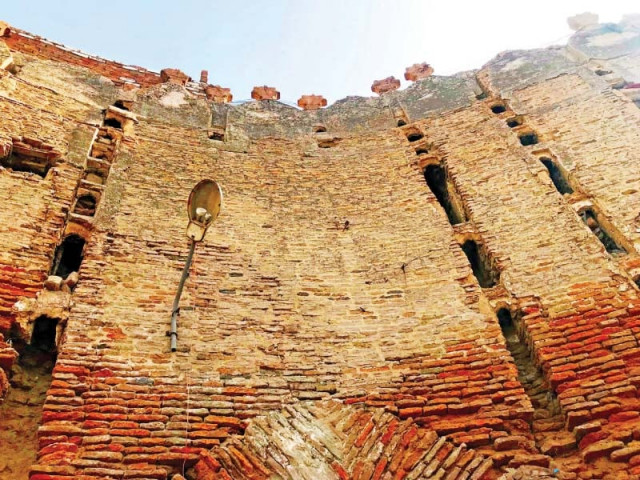
A street light hangs crookedly off the imposing walls of Pakka Qila. Residents have set up shelter and small business enterprises within the walls, leading to the further deterioration of the once-glorious fort. PHOTOS: EXPRESS
After Partition, the fort, built by Kalhoro on a hillock known locally as Gunjy, was turned into a temporary refuge for those who migrated to Pakistan from India. State apathy and neglect for the refugees, though, meant that they had nowhere else to go. And so they stayed.
Today, 72 years later, thousands of people still live within its once-formidable walls, while their encroachment and the continued disregard of successive governments have left the qila a derelict ghost of its former self.
A refuge for the displaced
According to archaeologist and historian Dr Kaleemullah Lashari, the historic monument was inhabited by refugees from India after 1947. "Those who migrated to Hyderabad initially made camps in the open spaces of the fort. Gradually, though, they began using the cellars in the fort walls to shelter themselves from nature," he explains. "It was never meant to be a solution for the resettlement of the refugees, but the situation dragged on for an undesirably long period."
Archaeological site unearthed after ‘heritage’ building is razed in Hyderabad
Where parts of the walls have caved in, tuition centres mingle with tailors and cobblers - enterprising residents have set up small shops to practice their professions. Inside them, though, the walls are in no better condition; cracks and holes abound.
"People have created kitchens and washrooms in the fort's walls, and the abundant use of water has weakened them," says Dr Lashari. "As a result, portions of the walls collapse frequently, which have killed many people too."
Preserving the past
Faced with an increasingly dilapidated qila, the Sindh antiquities department proposed a plan for its preservation. The scheme envisaged the construction of 350 apartments on municipal land near the fort, where the Pakka Qila's residents were to be resettled. This was to be followed by careful preservation work to safeguard the historic structure and prevent more people from being struck down by falling portions of the wall.
The plan was approved by the Provincial Development Working Party and funds allocated for it. But the scheme's objectives were altered to only undertaking the conservation of selected parts of the fort and beautifying its entrance. The original goals were compromised; much of the fort would continue to disintegrate, while the risk to human lives would remain in place, or even rise.
Dr Lashari, the former chief custodian for Sindh, claims he was approached by the Sindh government to oversee the construction of apartments for the fort's inhabitants. However, he was transferred before the project could begin, and now, the process has come to a standstill.
"I came up with this project and wanted to do it because I wanted to construct the apartments, resettle those families and then fortify the historic monument," he says. "But now that I have been transferred from this department, nobody is working on it."
He is still willing to play a role, however. "Although I am no longer a part of the project, I would like to offer my help in conserving Pakka Qila, without any payment. We should not be ignoring this piece of our heritage, and we should pay attention to what is happening there," he insists. "We risk losing the heritage sites of Pakistan if something is not done soon."
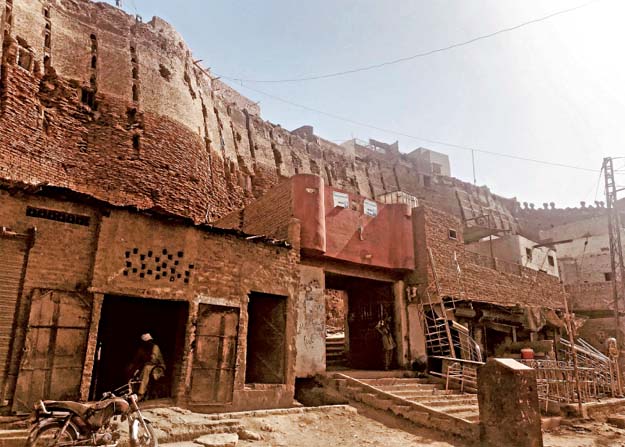
Politicising the qila
Yet the project comes with its own politics. Pakka Qila became the site of a standoff between the Muttahida Qaumi Movement-Pakistan (MQM-P) and the Pakistan Peoples Party (PPP).
MPA Muhammad Rashid Khilji, who belongs to the MQM-P, says it was his party that first took charge and gathered funds for the qila's restoration. "Unfortunately, due to the ignorance of the Sindh government, no action was taken," he claims. "However, [Sindh Culture, Tourism and Antiquities Minister] Syed Sardar Ali Shah has promised to restore the fort's front elevation and the walls that have been damaged by water and sewerage."
Khilji accuses the ruling PPP of being indifferent to the plight of Pakka Qila's residents. "It's the government's duty to provide them with housing, but they have never paid attention to the matter," he states, adding that the people did not have the resources to buy or build alternative housing.
On the other hand, though, Shah blames the MQM-P and the fort's residents for their 'lack of cooperation.' After all, he says, had the government not wanted to restore the qila, it would not have held meetings with them.
"I met the MPA and the MNA from Hyderabad, I asked them to shift the residents from the walls. I told them that if the people are willing to move, we are ready to give them plots and a proper place to live," he remarks.
"The MQM-P has its own political interests. They have their own constituency inside Pakka Qila," claims the minister. "Over 70,000 people live there - it's like a whole city. That's why they do not want to relocate these people."
He maintains that former prime minister Zulfikar Ali Bhutto made an attempt to resettle residents to Latifabad during his tenure. "He gave them plots, but they sold them and came back to the fort," he alleges. "They have illegally built shops after digging holes in the fort's walls. How can we restore the qila this way?"
Shah points out that if the government forcibly takes action, others will capitalise on it politically. "But I am making an offer to the MQM-P right now - come meet me tomorrow, make a written agreement with me, and I will evacuate the fort the next day," he maintains.
Strong ties
The people at the heart of the matter - Pakka Qila's residents - are sceptical, though.
Talpur mausoleums handed to family after renovation
Amir Hussain Siddiqui, a 46-year-old primary school teacher who lives in the fort, feels that visits by government officials have yielded no results. "They said they would build us apartments with proper facilities, but then they disappeared and nothing happened."
He points out the poverty of the site's inhabitants. "People here hardly earn enough money to feed their families - how can they buy a house?"
This, coupled with their deep ties to the heritage site, has made them reluctant to leave. "Our great-grandfathers lived here, we ourselves grew up here, how can we abandon the fort?" questions Muhammad Tahir Khan, another resident.
The strong attachment is intensified for those who have built their businesses there. Muhammad Sadiq, who runs a small bag-manufacturing factory inside the fort, says they have no choice but to take these actions for a living. "We have to feed ourselves and our families."
Published in The Express Tribune, March 14th, 2020.



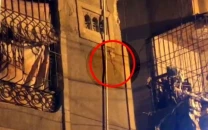
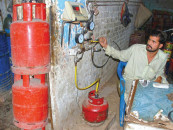
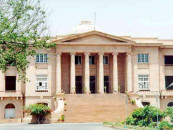
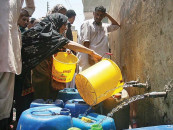












COMMENTS
Comments are moderated and generally will be posted if they are on-topic and not abusive.
For more information, please see our Comments FAQ